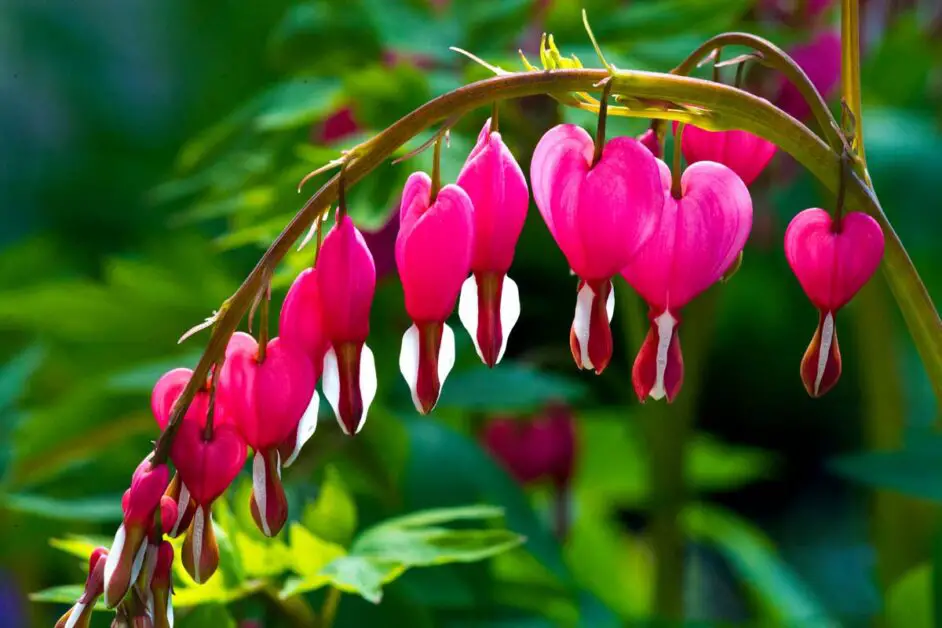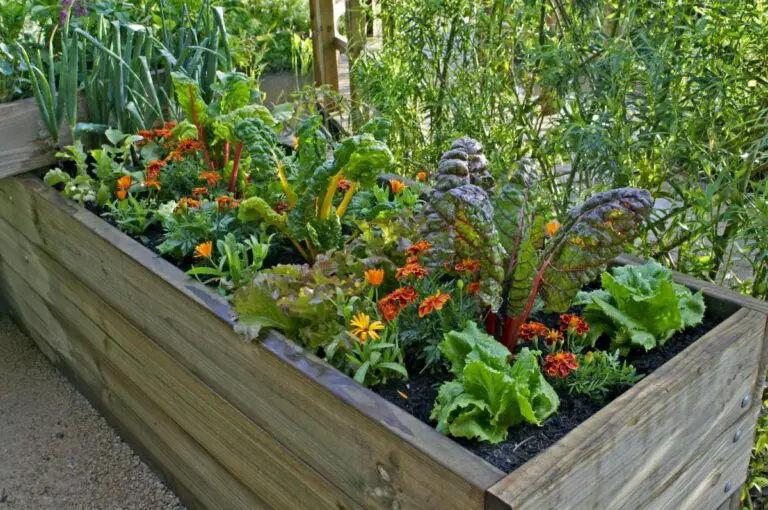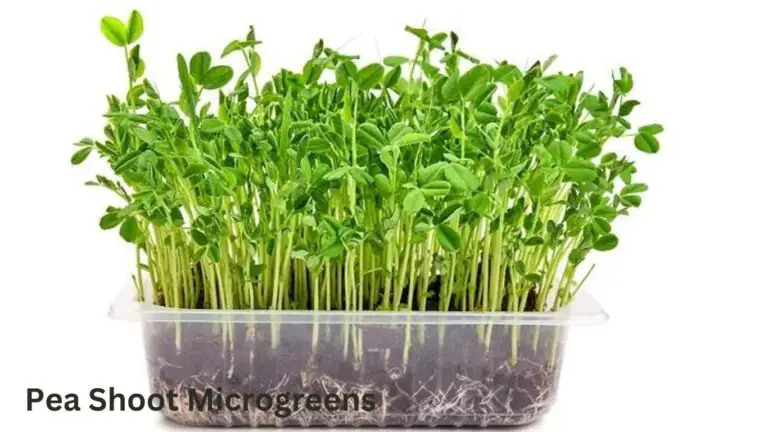Bleeding Heart Flower Care: Growing Dicentra Spectabilis
The Origin and History of the Bleeding Heart Flower
Many gardeners are captivated by the delicate beauty of the Bleeding Heart flower, scientifically known as Dicentra Spectabilis. This enchanting perennial plant holds a rich history and origin that adds to its allure in garden landscapes. Originating from Asia, particularly Japan and China, the Bleeding Heart flower has been cultivated for centuries, revered for its exquisite heart-shaped flowers that dangle from arching stems like elegant jewel-like ornaments.
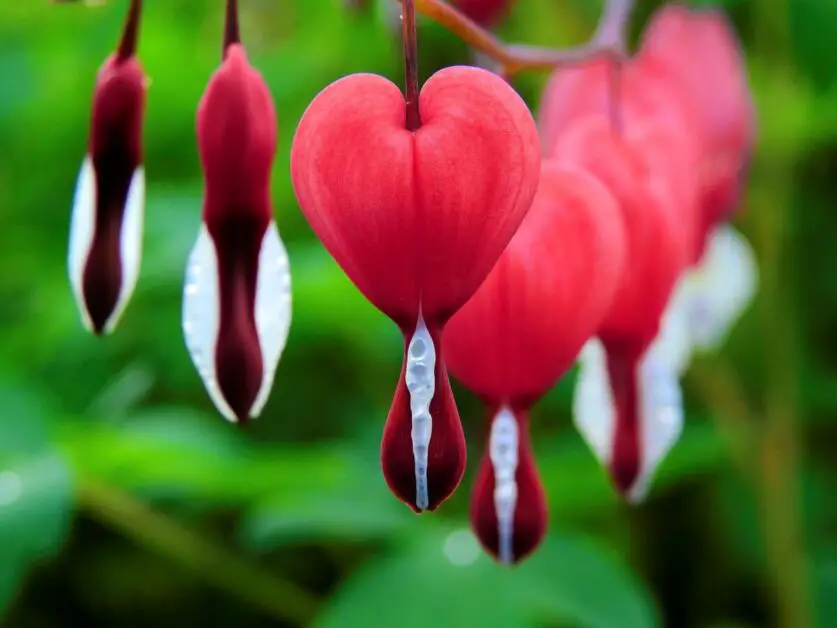
Throughout history, the Bleeding Heart flower has symbolized various emotions and meanings across different cultures. Its romantic name derives from the unique appearance of its blooms, resembling a droplet of blood or a heart with a protruding tip. This distinct visual representation has led to associations with love, compassion, and vulnerability, making the Bleeding Heart a cherished symbol in the language of flowers and a favorite choice for ornamental gardens worldwide.
Ideal Growing Conditions for Dicentra Spectabilis
Dicentra Spectabilis, commonly known as the Bleeding Heart flower, thrives in cool, moist environments with partial shade. This perennial plant prefers well-draining soil rich in organic matter, ensuring that excessive water does not accumulate around its delicate roots. When selecting a planting location for Dicentra Spectabilis, consider areas that receive filtered sunlight or morning sun with afternoon shade to prevent the plant from wilting under intense heat.
Maintaining consistent moisture levels is crucial for the optimal growth of Bleeding Heart flowers. Water the plant regularly, ensuring the soil remains moist but not waterlogged. Mulching around the base of the plant helps retain soil moisture and regulates soil temperature, creating a conducive environment for healthy root development. By carefully tending to its watering needs and providing the appropriate growing conditions, gardeners can enjoy the enchanting beauty of the Bleeding Heart flower in their outdoor spaces.
Sunlight Requirements for Bleeding Heart Flowers
Bleeding Heart flowers, scientifically known as Dicentra Spectabilis, thrive best in partial shade to full shade conditions. These delicate beauties prefer filtered sunlight, especially in warmer climates, to prevent sunburn on their sensitive foliage. In regions with hot summers, providing morning sun and afternoon shade can help maintain the health and vigor of Bleeding Heart plants.
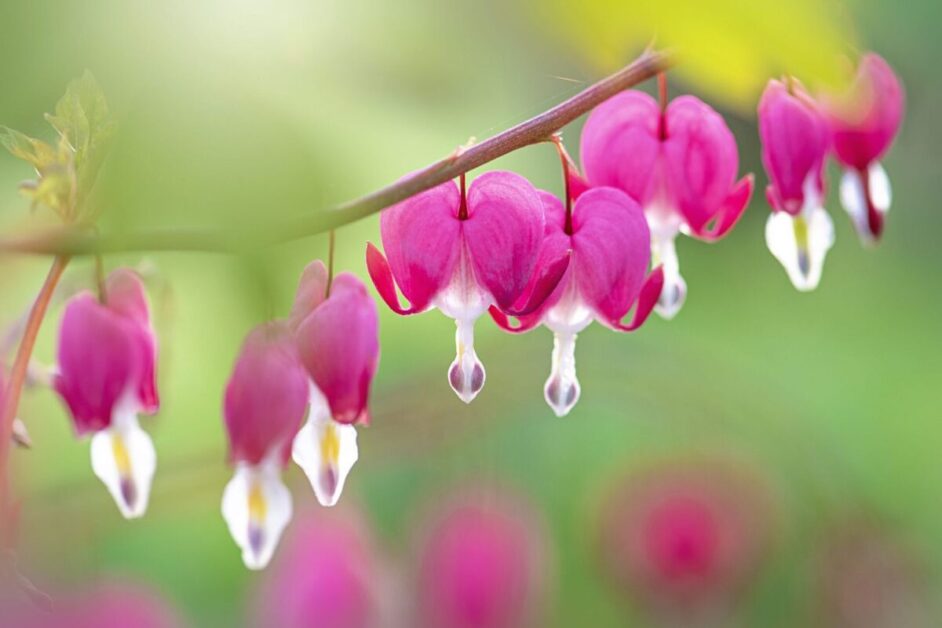
While some varieties of Bleeding Heart flowers can tolerate more sunlight, it is generally recommended to avoid exposing them to direct sunlight for extended periods, as this can lead to leaf scorch and reduced blooming. Understanding the specific sunlight requirements of Dicentra Spectabilis is essential for cultivating a flourishing garden filled with these captivating, heart-shaped blooms.
Soil Type and pH Level for Healthy Growth
For optimal growth and flourishing of Bleeding Heart flowers (Dicentra spectabilis), the choice of soil type and pH level is crucial. These delicate perennials thrive best in rich, well-draining soil with a slightly acidic to neutral pH range of 6.0 to 7.0. The ideal soil composition should be humus-rich, loamy, and moist, providing the necessary nutrients and water retention for healthy development.
The pH level of the soil directly impacts the availability of essential nutrients to the Bleeding Heart plant. A pH level that is too high or too low can hinder nutrient uptake, leading to deficiencies and stunted growth. Monitoring and maintaining the soil pH within the recommended range will ensure that the Bleeding Heart flowers receive the necessary nutrients for vibrant blooms and robust foliage. Remember, soil testing kits are valuable tools for assessing and adjusting the pH level of the growing medium to support optimal growth conditions.
Watering Tips for Dicentra Spectabilis
Proper watering is essential for the health and vitality of Dicentra Spectabilis, commonly known as Bleeding Heart flowers. These delicate plants prefer consistently moist soil but can struggle with excessive waterlogging. To strike the right balance, aim to water your Bleeding Heart flowers deeply once a week, ensuring the top few inches of soil remain moist but not waterlogged. During hot and dry periods, you may need to water more frequently, taking care to avoid drenching the foliage to prevent fungal growth.
When watering your Dicentra Spectabilis, it is crucial to water at the base of the plant to deliver moisture directly to the roots. Avoid overhead watering, as this can lead to leaf spots and other fungal issues. To check if your Bleeding Heart flowers need watering, simply insert your finger into the soil – if it feels dry a few inches down, it’s time to water. Always adjust your watering frequency based on the specific conditions in your garden, ensuring that your beloved Bleeding Heart plants thrive all season long.
Fertilizing Schedule for Bleeding Heart Flowers
When it comes to fertilizing Bleeding Heart flowers, it is important to choose a balanced fertilizer with equal parts nitrogen, phosphorus, and potassium. These nutrients are essential for healthy growth and flowering. Begin fertilizing in early spring as new growth emerges, then repeat every 4-6 weeks throughout the growing season. Avoid over-fertilizing, as this can lead to excessive foliage at the expense of flowers. A slow-release organic fertilizer can be a good option to provide a steady supply of nutrients over time.
Organic matter such as compost can also be used to top-dress the soil around the plants in early spring to enrich the soil and provide a natural source of nutrients. Additionally, mulching with organic materials can help retain moisture and promote soil health, which in turn benefits the overall growth of Bleeding Heart flowers. Remember to water the plants thoroughly after applying fertilizer to ensure proper absorption and to prevent any potential burning of the roots.
Pruning and Deadheading Techniques
Pruning and deadheading techniques are essential practices for maintaining the health and vigor of bleeding heart flowers (Dicentra spectabilis). Pruning should be carried out in early spring before new growth emerges to remove any dead or damaged branches, promoting better air circulation and reducing the risk of disease. Deadheading, on the other hand, involves removing spent blooms to encourage continuous flowering and prevent the plant from expending energy on seed production.
When pruning bleeding heart flowers, make clean cuts just above a set of leaves to promote new growth and maintain a tidy appearance. Deadheading can be done throughout the blooming season by simply pinching off faded flowers at their base. These simple yet effective techniques will not only enhance the visual appeal of your bleeding heart plants but also contribute to their overall well-being and longevity.
Common Pests and Diseases to Watch Out For
Bleeding heart flowers, while beautiful and captivating, are not immune to pests and diseases that can affect their health and vitality. One common pest to watch out for is the aphid, known for its small size and ability to cluster on the underside of leaves, sucking sap from the plant. Aphids can cause distortion and discoloration of foliage if left uncontrolled. Another potential threat is the slug, a slimy creature that feeds on the tender shoots of bleeding heart plants, leaving behind ragged edges on the leaves. Proper monitoring and early intervention are crucial in managing these pests to prevent damage to your beloved blooms.
In terms of diseases, one to be wary of is powdery mildew, a fungal infection that appears as white, powdery patches on the leaves and stems of bleeding heart plants. This disease thrives in humid conditions and can weaken the plant if left unchecked. Another common disease is root rot, caused by overwatering or poorly draining soil, leading to the decay of the plant’s roots. Ensuring proper air circulation, avoiding overhead watering, and maintaining optimal soil moisture levels can help prevent these diseases from taking hold and safeguard the health of your bleeding heart flowers.
The table below shows some of the common pests and diseases of bleeding heart flower:
| Common Pests and Diseases for Bleeding Heart Flowers | Description |
|---|---|
| Aphids | Aphids can infest bleeding heart flowers, sucking sap from leaves and causing distortion or discoloration. |
| Slugs and Snails | These pests can feed on bleeding heart foliage, leaving behind irregular holes and damage. |
| Powdery Mildew | Powdery mildew can appear as a white powdery substance on leaves, leading to leaf distortion and reduced vigor. |
| Leaf Spot | Leaf spot diseases can cause dark spots or lesions on bleeding heart foliage, potentially leading to leaf yellowing and drop. |
| Crown Rot | Excessive moisture or poor drainage can lead to crown rot, causing the plant’s crown and roots to rot, ultimately leading to plant death. |
How to Propagate Bleeding Heart Flowers
Bleeding Heart flowers can be propagated through division or seeds. To divide mature plants, carefully dig up the root ball in early spring or fall, and separate the tuberous roots into sections ensuring each division has both roots and shoots. Replant the divisions in well-draining soil and water thoroughly. For propagating through seeds, collect ripe seed pods in late summer or early fall, remove the seeds, and store them in a cool, dry place. Sow the seeds in a seed tray filled with a moist seed-starting mix, cover lightly, and keep the tray in a warm location with indirect sunlight.
Propagation of Bleeding Heart flowers can be a rewarding process that allows for the expansion of your garden and the sharing of these beautiful plants with others. Whether you choose to divide mature plants or sow seeds, ensuring proper care and attention during the propagation process will set the stage for healthy growth and vibrant blooms in the seasons to come. Experiment with different propagation methods to find what works best for you and enjoy the beauty of these unique and captivating flowers in your garden.
Transplanting Dicentra Spectabilis
Dicentra spectabilis, commonly known as the Bleeding Heart flower, is a beloved perennial that graces gardens with its unique heart-shaped blooms. As your garden evolves, you might find the need to transplant these delicate beauties to new locations for better growth and aesthetics. Transplanting Dicentra spectabilis is a straightforward process, but timing and care are crucial for ensuring its successful adaptation to a new environment.
To transplant Dicentra spectabilis, choose a location with well-draining soil and partial shade to mimic its preferred growing conditions. Begin by preparing the new planting hole before carefully digging up the plant, ensuring you disturb the roots as little as possible. Once replanted, water the Bleeding Heart thoroughly to help it settle into its new home. Remember to monitor its progress closely in the following weeks to ensure it establishes itself well in its new surroundings.
Container Gardening with Bleeding Heart Flowers
When it comes to container gardening with Bleeding Heart flowers, selecting the right pot is crucial for the health and growth of your plant. Opt for a container that provides ample drainage holes to prevent waterlogging, as Bleeding Hearts prefer moist but well-drained soil. A container with a depth of at least 12 inches and a similar width will allow the plant’s roots to spread out comfortably.
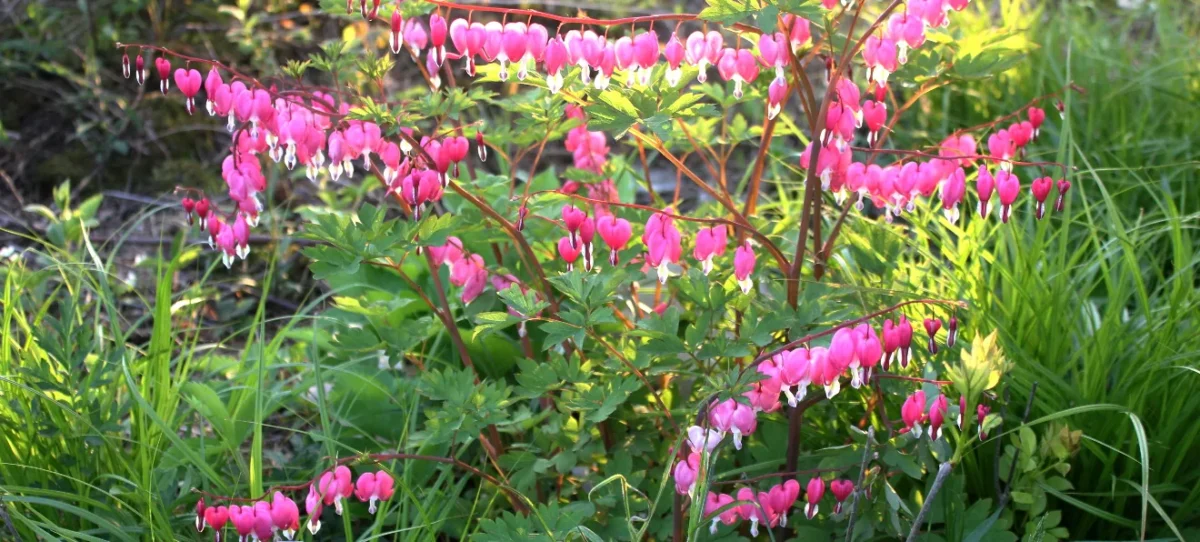
In terms of soil, choose a well-aerated, organic-rich potting mix with a slightly acidic to neutral pH level for optimal growth. Regularly check the moisture levels in the container, as potted plants can dry out more quickly than those in the ground. Water when the top inch of soil feels dry to the touch, ensuring that excess water can drain freely from the container. Remember to place your Bleeding Heart container in a location that receives partial to full shade, protecting it from intense afternoon sun for vibrant and healthy blooms.
Mulching Strategies for Soil Retention
Mulching is a crucial aspect of maintaining healthy soil conditions for your plants, including the delicate and elegant Bleeding Heart flowers. When choosing a mulching strategy to enhance soil retention around your Dicentra Spectabilis, consider using organic materials like shredded leaves, grass clippings, or bark chips. These materials not only help conserve soil moisture by reducing evaporation but also gradually break down to enrich the soil with essential nutrients.
In addition to organic mulches, inorganic options like stones or gravel can also aid in soil retention while providing a decorative touch to your garden beds. Regardless of the material you choose, ensure a sufficient layer of mulch is applied around your Bleeding Heart flowers, typically around 2-4 inches thick. This layer will not only help regulate soil temperature and suppress weed growth but also create a favorable environment for the roots of your Dicentra Spectabilis to thrive and reach their full potential.
Seasonal Care Guide for Dicentra Spectabilis
During the spring season, it is essential to monitor the new growth of your Dicentra Spectabilis plants carefully. As they emerge from their dormancy, ensure they receive adequate sunlight and water to support their development. It is also a good time to inspect for any signs of pests or diseases, addressing them promptly to prevent damage to the plants.
In the summer months, pay attention to the watering needs of your Bleeding Heart flowers, especially during hot and dry periods. Providing sufficient moisture will help them thrive and continue to produce delicate blooms. Additionally, consider applying a balanced fertilizer to support healthy growth and blooming throughout the season. Regular deadheading of faded flowers can encourage prolonged flowering and a neat appearance in your garden.
Here is a table showing the seasonal care for bleeding heart flower:
| Seasonal Care Guide for Dicentra Spectabilis | Description |
|---|---|
| Spring | – Water regularly as foliage emerges. Apply balanced fertilizer. Monitor for pests and diseases. Mulch to retain moisture and suppress weeds. |
| Summer | – Provide consistent moisture. Deadhead spent blooms. Monitor and manage pests/diseases. Consider providing shade in extreme heat. Apply compost or mulch. |
| Fall | – Continue regular watering until frost. Cut back foliage after natural decline. Apply mulch. Consider dividing overcrowded clumps. Clean up garden debris. |
| Winter | – Monitor for excessive moisture or rot. Apply thicker mulch for cold protection. Avoid disturbing dormant plants. Plan for spring maintenance. Enjoy the garden’s dormant beauty. |
Supporting and Staking Tall Varieties
For tall varieties of Bleeding Heart flowers, proper support and staking are crucial to maintain their upright growth and prevent flopping or bending. As these varieties can reach considerable heights, especially during the blooming season, providing adequate structural support ensures the plants remain visually appealing and healthy. Bamboo stakes or plant cages are commonly used for staking taller Bleeding Heart varieties, positioning them around the base of the plant and gently tying the stems to the supports as needed. Regularly monitoring the growth of the plant and adjusting the stakes or ties as necessary can help prevent any damage or stress on the delicate stems.
When selecting the appropriate support for tall Bleeding Heart varieties, it’s essential to consider the specific needs of each plant. Some varieties may require taller stakes or multiple supports to withstand strong winds or heavy blooms. Ensuring that the stakes are inserted deep enough into the soil to provide stable anchorage is also important in maintaining the plants’ structural integrity. By taking the time to properly stake and support tall Bleeding Heart varieties, gardeners can enjoy their elegant beauty without worrying about potential damage or drooping stems.
Creating a Beautiful Landscape with Bleeding Heart Flowers
Incorporating Bleeding Heart flowers into your landscape design can add a touch of elegance and whimsy to your garden. These dainty, heart-shaped blooms bring a unique charm with their dangling clusters of pink, white, or red flowers. Planted along pathways or bordering a garden bed, Bleeding Hearts create a romantic and enchanting atmosphere in any outdoor space. Their graceful appearance and vibrant colors can brighten up shaded areas, making them a popular choice for shaded gardens or woodland settings.
When strategically placed among other perennial plants with varying heights and textures, Bleeding Hearts can create visually stunning garden compositions. Their fern-like foliage provides a delicate backdrop for bolder plants, while their arching stems add a soft vertical element to the landscape. Consider combining Bleeding Hearts with hostas, ferns, astilbes, or other shade-loving perennials to create a harmonious and captivating garden display that will bloom year after year.
Watch the video to learn further about bleeding heart flower.
Harvesting and Preserving Blooms for Indoor Display
To ensure the longevity of your beautiful Bleeding Heart flower blooms for indoor display, it is crucial to harvest them at the right time and utilize proper preservation techniques. When harvesting blooms for indoor arrangements, choose flowers that are in full bloom but not yet wilted. Cut the stems at an angle with sharp, clean shears and immediately place them in a vase filled with water to prevent wilting.
Preserving Bleeding Heart flowers for indoor display involves ensuring they stay fresh for as long as possible. Change the water in the vase every 2-3 days and trim the stems at an angle to promote water absorption. Additionally, keeping the blooms away from direct sunlight and sources of heat will help maintain their vibrancy and extend their lifespan in your indoor arrangements.
Can I harvest Bleeding Heart flowers for indoor display?
Yes, you can harvest Bleeding Heart flowers for indoor display by cutting the stems at an angle and placing them in a vase with water.
How long will harvested Bleeding Heart blooms last indoors?
With proper care, harvested Bleeding Heart blooms can last up to a week indoors.
Should I remove any foliage before displaying Bleeding Heart flowers indoors?
It is recommended to remove any foliage that will be below the water line in the vase to prevent rotting.
Is there a specific time of day that is best for harvesting Bleeding Heart flowers?
It is best to harvest Bleeding Heart flowers in the early morning or late afternoon when they are well-hydrated.
Can I mix Bleeding Heart flowers with other types of flowers in a bouquet for indoor display?
Yes, Bleeding Heart flowers can be mixed with other types of flowers to create a beautiful bouquet for indoor display.

